Stamps MDes: First Year in Review
Ever had a retinal image taken at the optometrist? As visually interesting as the orange interworkings of your eye can be, it can be hard to tell what you're meant to glean from it.
As one glaucoma patient aptly put it, "Unless all your patients are doctors, the photo really doesn't mean a thing." So what should the medical assistant share with the patient? How can patient/caregiver exchanges be redesigned to support the best possible healthcare delivery? That's exactly what Stamps School MDes students have been tackling during the inaugural year of their program.
Founded in 2015, the Stamps MDes in Integrative Design is a graduate-level Masters of Design program. While MDes programs at other universities focus exclusively on either design research (the investigative steps taken prior to prototyping, for example) or design practice (designing products for production), the Stamps MDes in Integrative Design focuses heavily on design process. Specifically, collaborating closely with companies, their professionals, and their consumers to create a body of research that fuels design proposals that are deeply informed by empathy and human behavior.
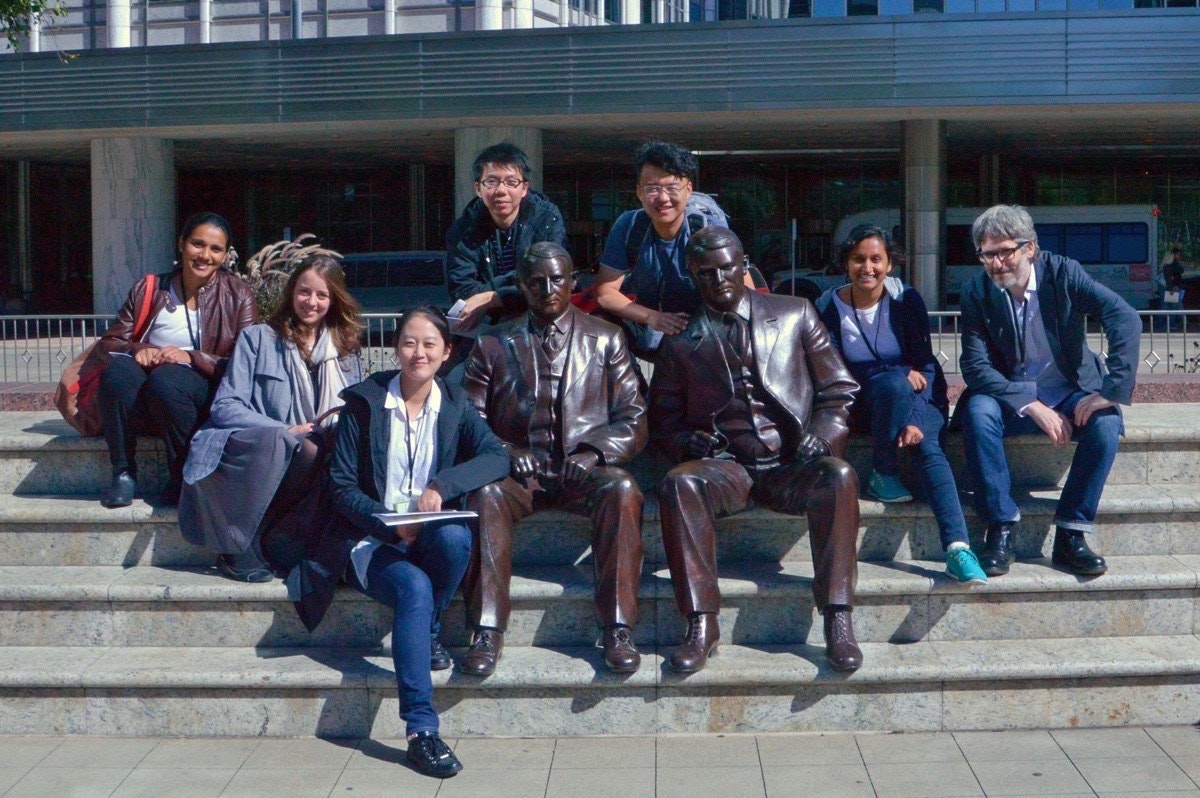
Each incoming class of MDes students is small, a total of 5 to 6 students, forming a tight-knit cohort that will work as a unified team on hands-on projects with corporate and non-profit partners throughout the two-year program. All MDes students come to the program with professional experience - primarily in the design field, with a few exceptions for career-changers with skills related to design-thinking.
Elizabeth Vander Veen (MDes '17) is a great example of the interdisciplinary nature of the program. As a licensed speech-language pathologist, she brings an aptitude for combining people skills with technical understanding. "In many graduate programs, students select a specialty and concentrate on developing specific skills while leaving others at the door," Elizabeth said. "Yet we need undivided skill sets brought together as a team in order to do our real world, project-based work. It goes beyond an academic exercise."
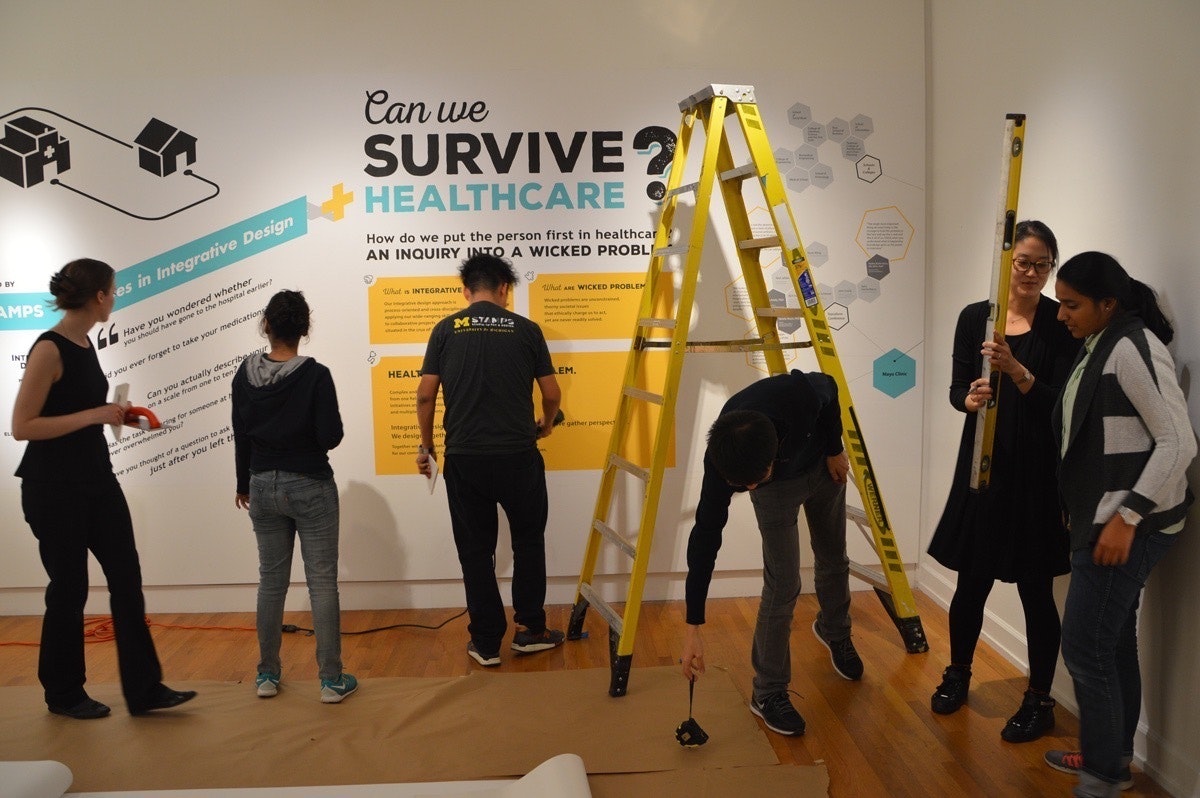
One of the most compelling aspects of the program is that each cohort will work on projects that relate to a major 21st century challenge, referred to by Stamps Professor and MDes Program Director John Marshall as "wicked problems." The 2015 cohort's challenge: 21st century healthcare delivery. To address elements of this "wicked problem," the 2015 cohort partnered with the Kellogg Eye Center, Blue Cross Blue Shield of Michigan, the VA Ann Arbor Healthcare System, and Guardian Industries Corp.
While each cohort's "wicked problem" serves to unite and strengthen their corporate and non-profit partnerships, the research methodology used in the MDes program can be applied to any number of complex challenges. "There are so many problems in the world that need to be addressed," said Kuan-Ting Ho (MDes '17). "Right now we are focused on healthcare, but it's an integrative design approach. We can use it broadly."
Major Projects
During the first year of the program, the MDes cohort focused on two real-world projects: I-MPACT and Eye Guide.
For the Eye Guide project, MDes students teamed up with Dr. Paula Anne Newman-Casey, Assistant Professor in the Department of Ophthalmology and Visual Sciences at the University of Michigan Kellogg Eye Center. In 2013, Dr. Newman-Casey noticed a big problem. "Many patients don't take their medications," she said. "I wanted to figure out how I could empower my glaucoma patients to take responsibility for their own self-care." Since glaucoma is a chronic disease that has no symptoms at its onset, there are many reasons that a glaucoma patient might not adhere to her care plan. Dr. Newman-Casey administered a survey to find out why. "Overwhelmingly, the survey showed us that patients don't understand how to take their eye drops. They also don't see any problems with their vision, so why medicate?" she said. "I realized that we really needed to personalize the way we deliver patient education. Currently, there is no standard for this."
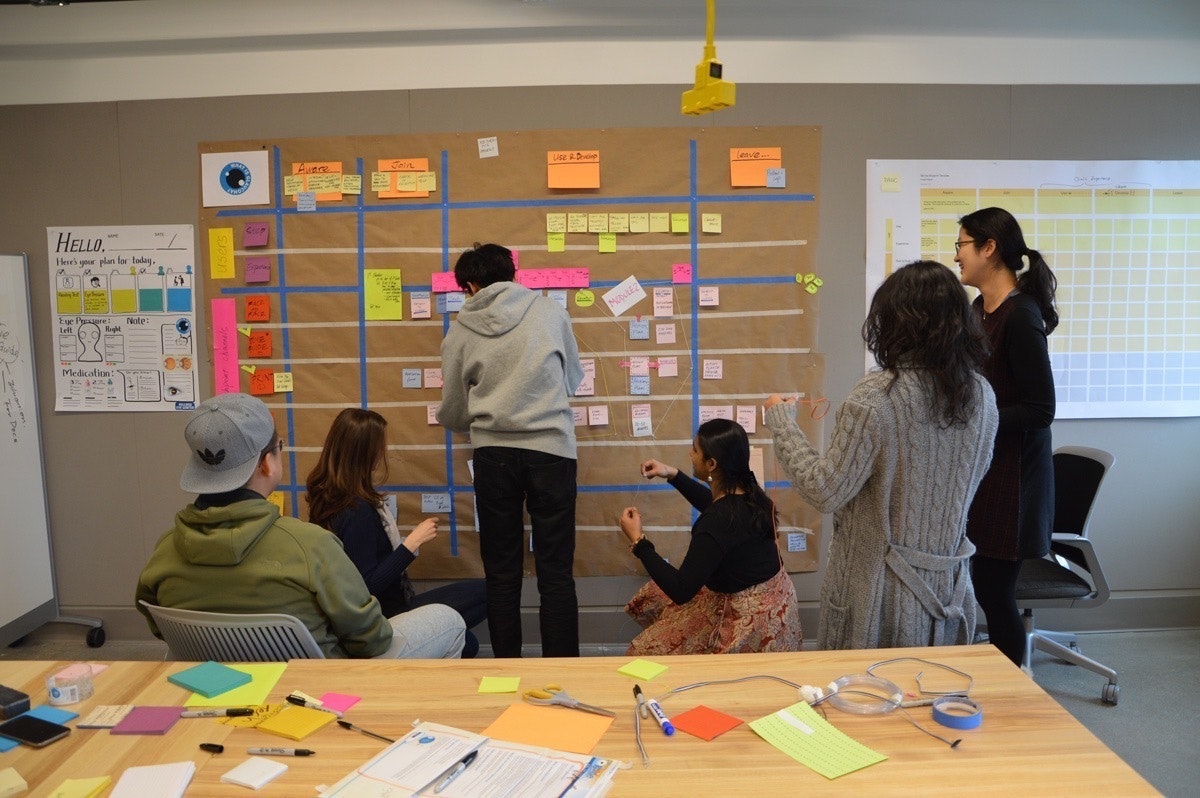
A standardized, yet highly personal system is exactly the kind of complex challenge that can benefit from the MDes cohort's approach. With funding from National Institute of Health, Dr. Newman-Casey created a web-based tool to standardize how ophthalmology technicians deliver glaucoma education to patients. The MDes cohort took that tool, analyzed it, and refined it to enable medical technicians to facilitate productive conversations with patients about how to encourage behavioral changes that will support glaucoma care and medication adherence.
On April 29, 2016, the MDes cohort led a focus group with glaucoma patients and their caregivers in the MDes Studio. Here, the cohort unveiled their web-based personalized behavior change program prototype and service design plan via a staged conversation to demonstrate how the tool would be used in practice.
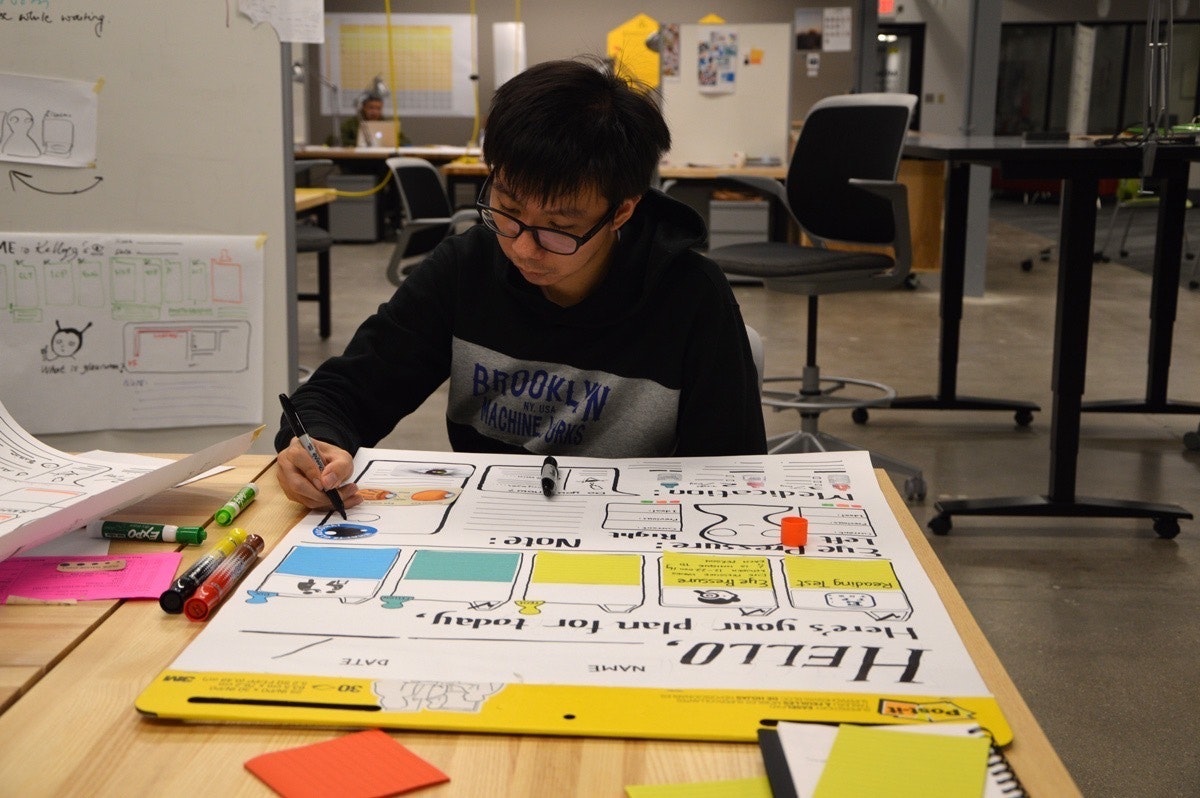
In addition to offering patients a comprehensive explanation of the disease, hands-on tips for eye-drop application, and medication reminder action planning, the web-based conversation tool encouraged patients to articulate why their glaucoma care was important: "I have a daughter; I need my eyesight to keep working to provide for her and to watch her grow up."
Throughout the demonstration, the cohort skillfully paused to solicit feedback from the focus group participants, probing for everything from "is this handout readable?" to "how comfortable would you be sharing your personal values with the technician?"
With the feedback from the focus group, Kuan-Ting Ho (MDes '17) has been hired as a Kellogg Eye Center intern to finalize the digital tool in summer 2016.
"While this project will improve patient care at the Kellogg Eye Center, the hope is that it will also be adopted by glaucoma centers throughout the country," Dr. Newman-Casey stated. "We've got a ways to go with testing in various sites, but the goal is to deliver quality patient-centered care on a large scale."
The second major MDes project of the 2015/2016 academic year was the I-MPACT project. The project aimed to improve healthcare delivery by uncovering barriers for successful patient transition from hospital to home. For this project, the MDes cohort partnered with a first-of-its-kind Blue Cross and Blue Shield learning collaborative comprising 46 physicians, patients, and caregivers called I-MPACT (Integrated Michigan Patient-Centered Alliance on Care Transitions).
In the winter 2016 term, the cohort undertook a rigorous, multi-level investigation process with hospital partners to generate knowledge and metrics, with a keen focus on the patient experience. This research will fuel the cohort's design recommendations, as they propose new, patient-centered ways to reduce return ER visits, enable successful healing, and promote future patient wellness.
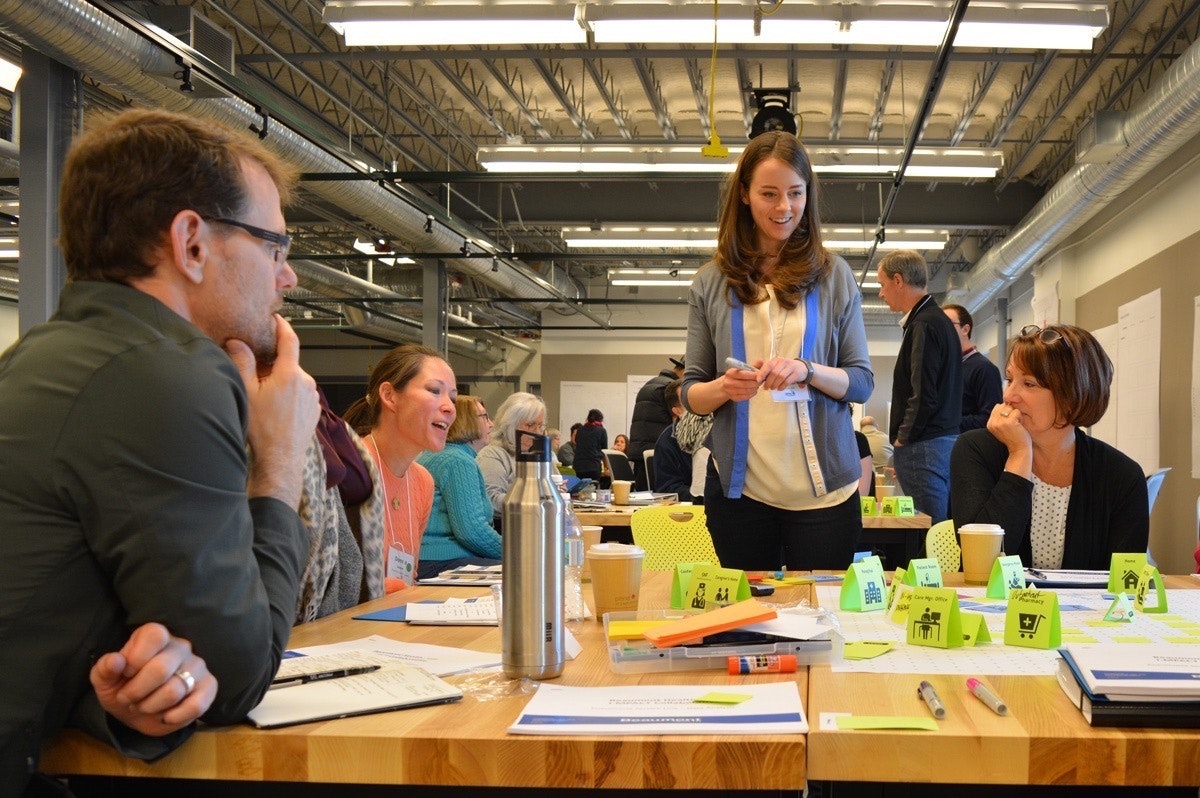
In April 2016, the MDes cohort launched the I-MPACT project with a kickoff that also served as the first-ever in-person meeting of the entire collaborative. The day included an icebreaker session to acclimate the doctors, patients, and caregivers of I-MPACT to the MDes process; a panel discussion with patients; a self-designed board game to level the hierarchy between participants; and a problem generation and intervention targeting session.
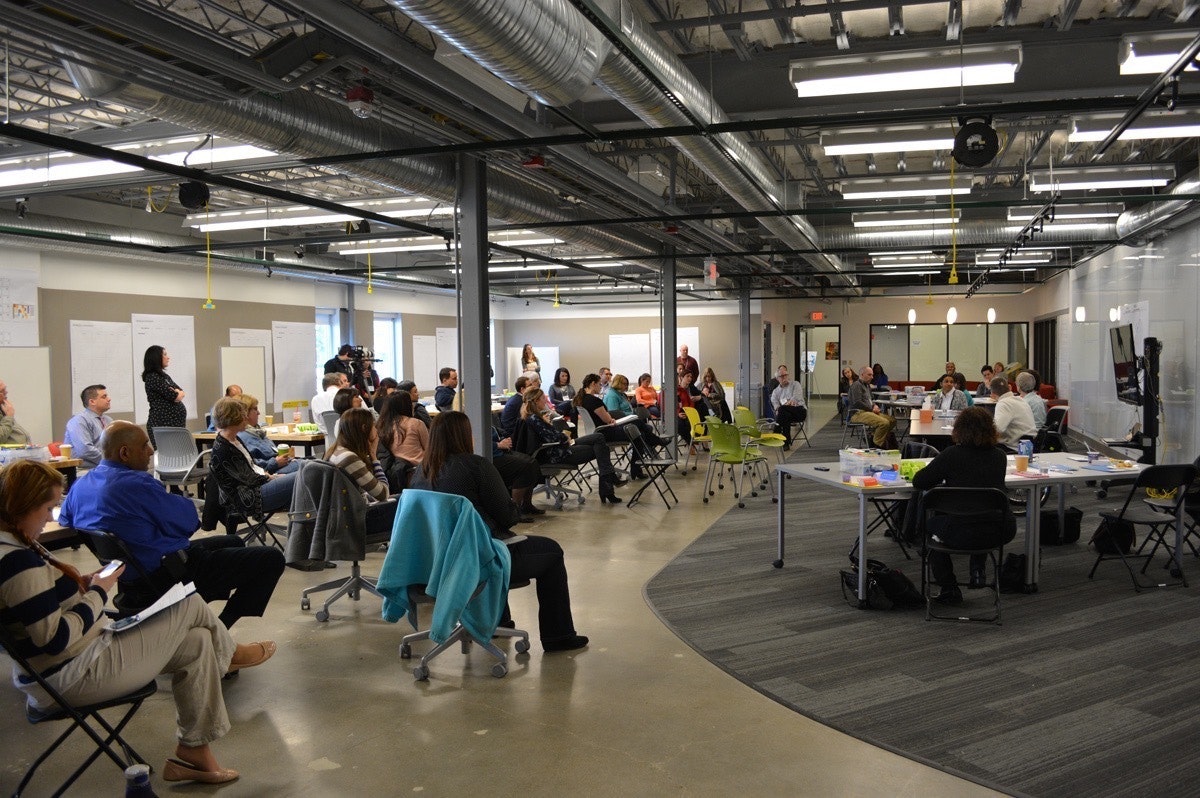
As a senior representative of Blue Cross Blue Shield of Michigan said,
“This has been the best kickoff, ever. We really need to rethink how we do these things in future.”
MDes students Elizabeth Vander Veen and Manasi Agarwal have been hired by I-MPACT as summer 2016 interns to further work on the project.
The 2016/2017 academic year marks year two for the MDes program's first cohort and year one for its second cohort. "Cohort one has really created a strong foundation for the second cohort to build on when they start in fall 2016," said program director, Professor John Marshall. "In spring 2016, the first cohort worked as an in-house design team for Guardian Industries Corp. We have a number of other eager partners to work with in the coming year. The students are doing really fantastic work. It's an exciting program to be a part of."
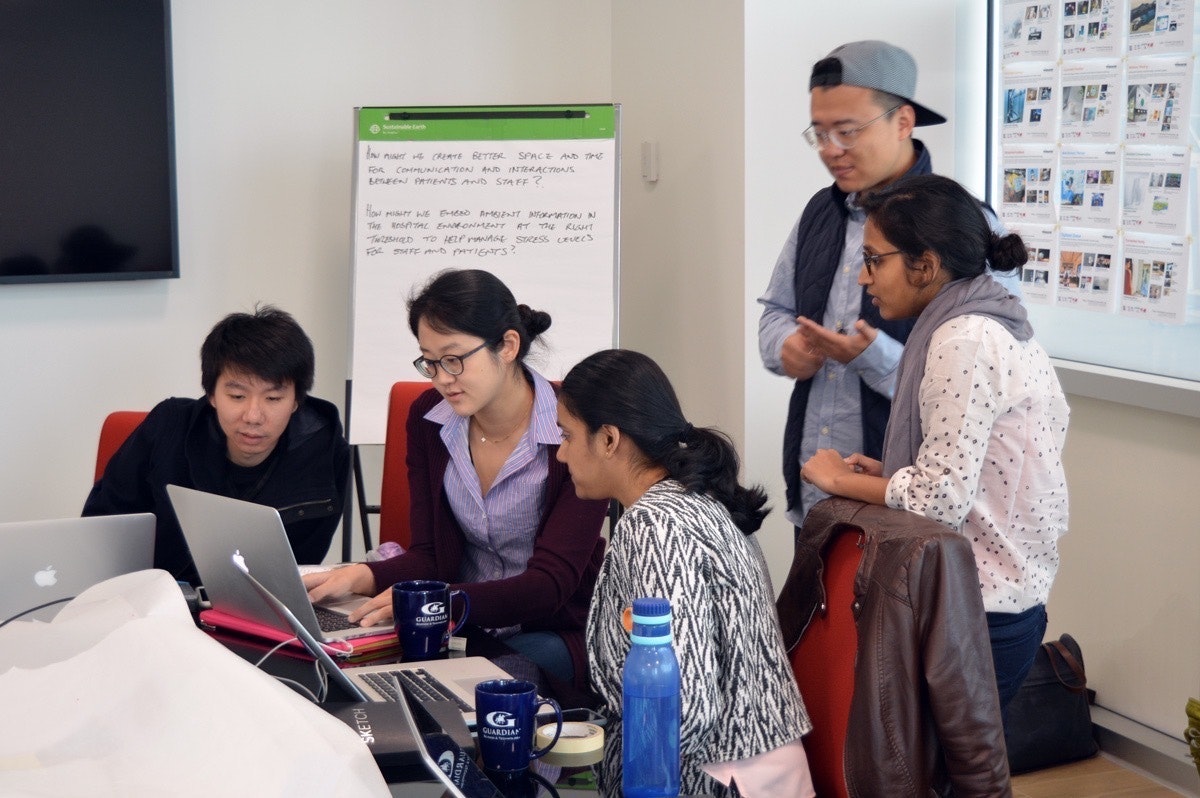
Story by Truly Render. Photos by Manasi Agarwal and John Marshall.